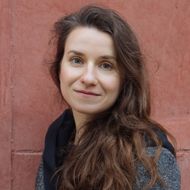A hidden ongoing revolution brought to light by the pandemics: a monitoring of changes in school education
What. It is high time to launch a monitoring of the revolution which has been covertly unfolding in school education. The expected duration of the project is 5 years.
Why. In the late 1990s – early 2000s, a number of countries started to actively transform their education systems to adjust their school graduates’ competences to the demands of the changing labour market and, more broadly, ‘global challenges’. Simultaneously, schools are now experiencing a pressure from the new technological and informational opportunities which spur a change in the formats of teaching and learning.
The general shift is associated with an enhancement of the learner’s role: the former compliant passive recipient is now turning into an active agent (both in terms of personalising one’s curriculum and implementing it), the boundary between schools and families is getting blurred (as well as the boundary between family and employment, which also has its impact on learning practices). This is accompanied by a growth of inequality (including digital inequality).
This transformation has already been evolving gradually but has mostly remained invisible, covered by the established social institutions and structures. With the pandemics and the schools lock-down, the volcano has erupted. Old structures have failed, but the gap is being filled by structures and agents hidden thus far. This has become a particular shock for Russia, which is about 20 years behind PISA leaders in the process of institutionalisation of new relationships and actors in education.
The pandemics has accelerated all the processes and unsealed the slow developing radical changes in the existing institutions, social structures and the position of individual actors in them. The forced transition to online-learning has revealed three interrelated dimensions of change:
- an enhancement of learners’ efforts in the context of technological and organisational change;
- a redistribution of responsibility for learning (and learning outcomes) in the “family – formal schooling – learner – informal learning” relations; an emergence of new structures meeting the needs of various actors;
- a growth of inequality in terms of digital cultural capital.
How. The monitoring will include four main data sources:
- a phenomenological analysis of the dynamics of social structures and institutions (as experienced by those involved in learning);
- an analysis of household time budgets;
- an analysis of learning tasks offered by schools and how they are experienced by children;
- interviews with leaders of new/emerging institutions and structures
Additionally, two more data sources are being considered:
- digital ethnography (digital tracks, digital “scrapbooks” )
- a research experiment for school children to work on learning tasks which require individual and collaborative agency.
Key research questions and hunches.
Quantitative estimations are tentative.
Dimension 1: Enhancement of learners’ efforts in the context of technological and organisational change
Dimension 2: Redistribution of responsibility for learning (and learning outcomes) in the “family – formal schooling – learner – informal learning” relations
Dimension 3: Growth of inequality in terms of digital cultural capital
Component 1: A phenomenological analysis of the dynamics of social structures and institutions
Methods: interviews with parents, school children and teachers, twice a year.
- 50-60 households: 10-12 households per each socio-professional type (non-routine/routine analytical/manual labour), with school children of different ages (primary, secondary; high school: academic and/vs professional track);
- 50 teachers: 10 teachers per type of school (strong / weak / resilient / participating in pilot education reform projects / VET college)
Teacher’s control of how pupils use space and time is loosening (Foucault): «I can be sitting wherever I like, in whatever way I like»
Perception of time: learning is embedded in rhythms and rituals (=established structures); factors, dynamics, and effects of a change in the established structures; modalities of boredom (Heidegger), involuntary boredom (a lesson; a lock-down) and one’s agency to overcome the state of boredom; an inverse relation: boredom vs engagement, and their impact on learning outcomes.
Changing understandings: what is the main source of knowledge for pupils (teachers, textbooks, complex combinations of what is suggested by the school or found autonomously of the pupil)
An enhanced role of agency for success in digital learning (those who are more active tend to achieve better results; a passive approach, acceptable offline, fails in online environments)
The role of the learner in the appearance and functionality of new structures at the “family & school” juncture
Spatial boundaries are getting blurred: a mutual, IT-driven diffusion between school – home – work; blurring the boundaries between the cognitive (work, school) and the affective (home), their interplay and conflicts
Boundaries of social roles are getting blurred (teacher, learner, parent), the same is true of social groups (parents belonging to the same profession and engaged in their children’s learning)
Virtual teaching and learning communities above school boundaries; proactive, active, reactive, passive, rejective strategies
Relations between emergent and pre-existing structures (a spin-off / competing / driving out / greenfield). In which cases a disruption is needed with pre-existing institutions and structures, in order to make place for the emerging ones?
Life-long learning practices in the household, their relation to assumptions about learning responsibility (who is responsible for learning outcomes)
Sources of key competences and new literacies in the evolving organisational settings
Perception of risk and uncertainty (Luhmann): who decides what kind of risk (not) to take into account and in which context; “externalization of risk” as part of the “hidden curriculum” in distance learning
LMS as a limiting structure (reproduces a traditional classroom; impedes social educational innovations)
Manifestations of digital inequality, by the type of labour adults are engaged in
Differences in children’s learner agency, depending on the resources available to them and adults’ professional occupation (i.e. depending on their pre-existing dispositions). Children from digitally disadvantaged families may not recognise resources they have access to or may not be able to use them, thus aggravating their disadvantage
Household motivation and ability to efficiently use digital technologies for learning purposes (a flexibility of approaches: complying with an imposed technology or actively shaping it to meet one’s needs)
Social construction of online-learning technologies. Factors of their adoption, diffusion; what is the balance of risks, benefits, and trust
Household digital belonging: engagement in various communities; social ties of a household supported in the digital form
Implications of digital inequality: lack of access to education, to social well-being, to career opportunities. (Creative activities enlarge the virtual space, and confinement to a physical space is seen as less distressing)
One’s command of the “digital body” and the “language of digital communication”, both human-to-human and human-to-machine. Household’s restricted/extended 3Rs code in the digital environment: sources of development and support
Component 2: Household time budgets
Methods: data collection using an app
Sample: households from the first (phenomenological) group, and additionally about 5 thousand households
A questionnaire will be offered before the study to obtain essential information.
Period of observation: one week every six months
What will be registered:
- type of activity, duration, and engagement in learning practices (for adults, also in work-related practices) through an emotional evaluation of the activity;
- manifestations of learning agency through motives of communication among adults and children (reminding, informing, requesting, sharing);
- family social ties (offline- and online-contacts).
Dominant motive and type of communication in the family: procedures of social control are regulated by rigid temporal and spatial structures / complex forms of interaction, social hierarchy is blurred (Bernstein: positional vs personal type of interaction in the family)
Temporal boundaries are blurred: a mutual, IT-driven diffusion of school – home – work; multitasking
Blurring the boundary between the cognitive (work, school) and the affective (home), their interaction and conflicts; convergence of social roles
Socio-professional status of parents and their children’s time use and self-organisation skills
Adults’ engagement in children’s learning
Component 3: Analysis of learning tasks offered by schools and how they are experienced by children
Methods: data collection using an app
Sample: school children from the first (phenomenological) group, and additionally about 5 thousand school children
A questionnaire will be offered before the study to obtain essential information.
What is registered: school subject, learning task (a photo), pupil’s reaction: «boring / interesting», «difficult/easy», «involved open inquiry and personalisation / involved mostly reproduction».
Period of observation: two weeks every two months
The share of tasks evaluated as “boring” + “involved mostly reproduction”, for a subject Х, as a proxy for the curriculum and teaching practice’s (in)adequacy to the standards of high quality education
A high share of tasks evaluated as “involved open inquiry and personalisation” as a proxy for pupil’s learning responsibility and engagement
Differences in the evaluation of learning tasks depending on the families’ digital cultural capital
Component 4: Interviews with leaders of new/emerging institutions and structures
Interviews with leaders of teaching and learning communities, formal and informal, complementary and alternative to formal schooling
Methodology of empirical research:
- phenomenology (analysis of the lived experience)
- time budget , experience sampling method
Relevant theoretical frameworks and concepts:
- life-long learning
- digital cultural capital
- key competences and new literacies
- «the strength of weak ties» (M. Granovetter)
- diffusion of innovation and social embeddedness of technology
Our Team

Elizaveta Sivak

Olesya Yurchenko



